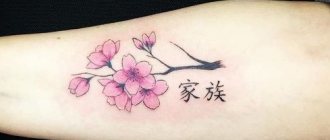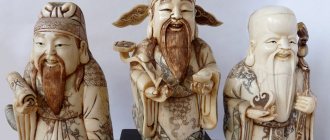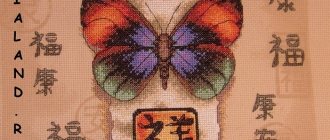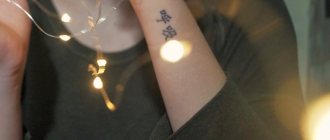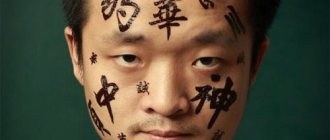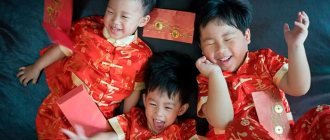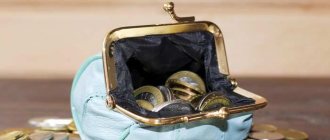World currencies
10.03.2021
23909
Author: Myfin.by editorial staff
Photo: pixabay.com
Yuan is the currency of the People's Republic of China. The word is used exclusively outside of China; translated as “circle” (“round coin”).
Last news:
Are you running out of money? Belarusians began to sell less currency. One picture
Does Belarus need a digital ruble? Opinions of a skeptic and an optimist
In the Celestial Empire, the lexeme “Renminbi” appears, which should be literally understood as “people’s money”.
International designation - CNY.
The yuan symbol is a Latin letter Y with two cross bars. The original name is Yen sign, code is U+00A5. There is a misconception that a letter with one stroke is used to denote the yuan, and a letter with two strokes for the yen.
Names
“Renminbi” is the official name of Chinese money (photo). They are designated as RMB. This word literally translates as "people's money." The name appeared with the formation of the People's Republic in 1949. However, it is not so popular.
The most common international name for Chinese money (pictured) is the yuan, abbreviated CNY. Its official symbol is ¥. However, in most restaurants and shops in China it is represented by the character "元", which is pronounced the same way. In addition to this name, you can hear the word “kuai”, which is a local designation for a means of payment.
There are also two names for 1/10 of it: “mao” or “jiao”.
The Chinese Yuan is only used on the mainland. Hong Kong's currency is the Hong Kong dollar, while Macau's currency is called pataca.
Paper money and silver
China's extraordinary economic boom in the eleventh century led to the introduction of the first paper money in the next century. As a result of using a currency that was not backed by gold or silver, the government of the state was faced with economic phenomena such as inflation and redenomination.
In the 15th century, silver bars weighing approximately 36 g began to be used as money. They were called “liang”. This currency was used to pay tax duties until 1933.
Division
Local means of payment are divided as follows:
1 yuan = 10 jiao (角) and 1 jiao = 10 fen (分).
The People's Bank issues yuan notes in denominations of one, two (very rare), five, ten, fifty and one hundred CNY. Jiao and fen coins are issued in numbers of one, two and five. In addition to them, metal money is also issued in denominations of one CNY.
The nominal and actual value of the yuan are identical. The exchange rate is 10 CNY to 1.48 US dollars. In fact, the Chinese rarely use this name for Chinese money (pictured), as discussed above.
The most popular word is “kuai”, which literally means “piece”. Historically it was used to refer to coins made of silver or copper. For example, the expression "10 kuai jian" literally means "10 pieces of money."
Price
The cost of rare Chinese gold and silver coins varies depending on circulation and demand. Gold coins in XF quality from 1906 cost $200-300 at auction, and $400-600 in AU quality. Silver examples from the revolutionary period cost from $400 to $1,000. In 2015, a Han-Sin silver dollar was auctioned for $1,300.
The price for modern commemorative coins (1982-1995) made of gold reaches $1500-4000 (“Panda” with a face value of 100 yuan), for silver coins – from $150 to $300.
Silver dollars
The name for Chinese money (pictured), known as "yuan", appeared much earlier than "renminbi". This Chinese word was used to refer to a silver coin that was minted primarily by the Spanish Empire and used by foreign traders in China for about four centuries. It was known as the peso in Spanish and the dollar in English.
European merchants, who began arriving in the early 16th century, traveled to China to buy silk and porcelain. Their local partners wanted the silver. As a result, most of the precious metal that was mined in the mines of Spanish America ended up there. Thus, for a long time the main currency of local businessmen was Spanish colonial Mexican means of payment.
In the second half of the 19th century, major trading countries began producing their own "trade dollars". The UK also issued them, along with the US, as shrewd Chinese traders demanded a higher quality of silver than the metal used in regular American currency.
Design
Drawings on ancient coins make it possible to trace how the minted art of China developed. If the oldest examples do not have signatures, then on later copies there are abstract inscriptions (ancient Chinese characters) and images (dragon, unicorn, phoenix). Modern rare gold and silver coins (commemorative and investment) are minted in Proof quality by hand.
Did you know? One of the most recognizable coins in the world of numismatics is the silver dollar with the profile of Sun Yat-sen (Chinese revolutionary and founder of the Kuomintang Party) on the obverse and the inscription “Memento Birth of the Republic of China” on the reverse. An earlier version of the coin was issued in 1912 to commemorate the founding of the Republic of China. But production ceased when Yuan Xikai became president in 1913.
The design of precious metal coins has improved markedly over time. In the Tang era, the reverse was decorated with an inscription of 4 hieroglyphs “nianhao” - the motto of the ruling dynasty, and the obverse was decorated with 2 hieroglyphs (the abbreviation for “nianhao” and the year of issue). Years later, graphic art (calligraphy) in China received great development. During the Song period, cursive handwriting and the first images appeared on the surface.
After the Xinhai Revolution of 1911 and the subsequent collapse of the empire, portrait coins made of precious metals appeared in China. Rare $1 examples contained portraits of General Yuan Shikai, Emperor Guangxu, and revolutionary Sun Yat-sen. The most expensive coin of that period, the 1927 $50 with a portrait of Zhang Zuo Lin, was sold at auction for $500,000.
In 1982, the first Proof coins appeared in gold, and in 1983, in silver. Popular, but rare (circulation was 20,000 copies) depicting the national animal - the panda in its natural habitat.
Investors and collectors liked the “Panda” series so much that every subsequent year (except 2001-2002) they released an edition with a new design. The coins immediately went into collections. The cost of the first Pandas reaches $4,000.
Story
The earliest form of Chinese currency was the shell (hence the use of the shell in many other symbols associated with value and wealth). Later they began to make bronze money. During the Warring States period (770 - 221 BC), different states had their own forms.
When the first Emperor Qin Shi Huang unified the country in 221 BC, round coins with a square hole in the middle were introduced, and this form of currency existed until about 1890.
For higher level transactions, silver bars called “liang” were usually taken.
Coins of Ancient China
The first currency in ancient China was not coins, but shells. Remains of such a “currency” were found not only in China, but also in areas where Greek colonies were located (4th century BC).
The shell coins used by the ancient Chinese were called cowries. Scientists claim that it was the Chinese who were the first to use them as money to pay for goods. Over time, the importance of such shells increased; they began to be produced in bronze, with the inscription “beat”. Only after this designation was applied was the shell considered money. Today, the inscription is used in Feng Shui and denotes trade, wealth, and successful sales.
The next stage was the production of similar coins from bronze. The first of them were slightly larger in size than modern coins, but did not yet have a round shape. They could be seen in the form of a hoe, keys, bell or shovel. They were not marked as money. Archaeologists also believe that in addition to bronze, limestone or clay, which was tightly pressed, could be used to make coins. Most of these coins were found in Chu province.
In Southern China, archaeologists have discovered modern “proto-coins” made of gold. They had the shape of a rectangle and a quadrangle. Their name already was “yuan”, but it did not yet designate the currency, but only the weight of the coins.
The first coins in Ancient China, which were similar in shape to modern ones, began to be produced in the Zhou province in the 3rd century. BC.
The era of New and Contemporary times
Banking in China began almost by accident in the 1820s in Pingyao. For some time, this fortified city became the financial center of the entire country. In 1835, the yuan appeared, the value of which was 0.72 liang.
The end of the imperial era and the turbulent times that followed were marked first by the emergence of local mints and then by high inflation and financial instability.
In 1935, the silver standard was replaced by the gold standard. The old coins stopped circulating and were replaced by paper “fabi”. The next reform took place in 1948. Then they began to issue paper yuan, which had a fixed gold content. Gradually they were supposed to completely supplant the "fabi".
It was not until the communist era, which began in 1949, that a stable currency was created, using mainly banknotes and coins.
Nakhodka
More recently, on the territory of the tomb, archaeologists discovered a huge number of coins dating back to the era that followed the reign of Qin Shi Huang. Scientists have found a real treasure - about ten tons of bronze qian. The value of the Chinese coins discovered by archaeologists was unrealistically high for the time they were used. Presumably, the money was intended for one of the emperors of the Han Dynasty (206 BC - 220 AD). The find is of great interest to historians and cultural experts, as it can tell a lot about the distant past of the Celestial Empire.
Traditions
In the country, when making small transactions, coins are preferred to banknotes, especially in rural areas. Red envelopes with banknotes of various denominations actually have ritual significance. They are given for holidays (especially Chinese New Year), for weddings, after the birth of a child, when visiting sick relatives, etc.
"Paper money" (actually low-quality yellow perforated paper with designs and denominations) is also burned for the dead, according to tradition that this way they will be able to pay in the afterlife. In addition to the funeral itself, this custom is typical for the Qingming Festival (Day of Remembrance of the Dead) or Tomb Sweeping Day.
Do the Chinese like metal coins?
The Chinese are calm about metal money. Southerners take them more readily. Thus, a machine at one of the subway (metro) stations in Shanghai did not want to accept paper money. I had to exchange them. Northerners prefer paper money. There are fewer problems in Beijing. The machines here are, as a rule, omnivores.
My advice. Feel free to offer a full handful of coins in the store. The seller (or cashier) and the queue (if there is one) will treat this with understanding. Money is money. If you are not a numismatist, then do not take a heavy bag of unused change with you to your homeland. Better buy something useful with it. The main thing is that you have enough money
